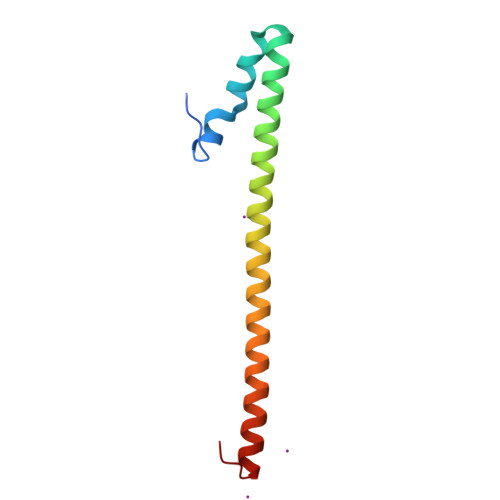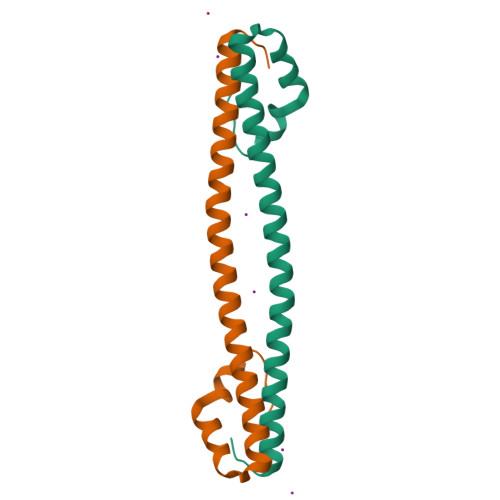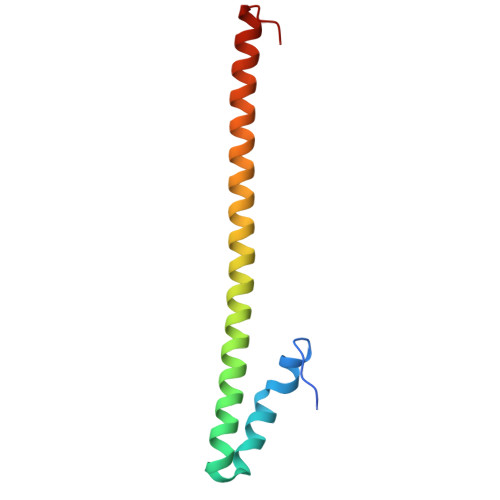Structural and Mechanistic Insight into CRISPR-Cas9 Inhibition by Anti-CRISPR Protein AcrIIC4 Hpa.
Hwang, S., Pan, C., Garcia, B., Davidson, A.R., Moraes, T.F., Maxwell, K.L.(2022) J Mol Biology 434: 167420-167420
- PubMed: 34954237
- DOI: https://doi.org/10.1016/j.jmb.2021.167420
- Primary Citation of Related Structures:
7MSL - PubMed Abstract:
Phages, plasmids, and other mobile genetic elements express inhibitors of CRISPR-Cas immune systems, known as anti-CRISPR proteins, to protect themselves from targeted destruction. These anti-CRISPR proteins have been shown to function through very diverse mechanisms. In this work we investigate the activity of an anti-CRISPR isolated from a prophage in Haemophilus parainfluenzae that blocks CRISPR-Cas9 DNA cleavage activity. We determine the three-dimensional crystal structure of AcrIIC4 Hpa and show that it binds to the Cas9 Recognition Domain. This binding does not prevent the Cas9-anti-CRISPR complex from interacting with target DNA but does inhibit DNA cleavage. AcrIIC4 Hpa likely acts by blocking the conformational changes that allow the HNH and RuvC endonuclease domains to contact the DNA sites to be nicked.
Organizational Affiliation:
Department of Biochemistry, University of Toronto, 661 University Avenue, Suite 1600, Toronto, Ontario M5G 1M1, Canada. Electronic address: https://twitter.com/s1hwang_21.

















